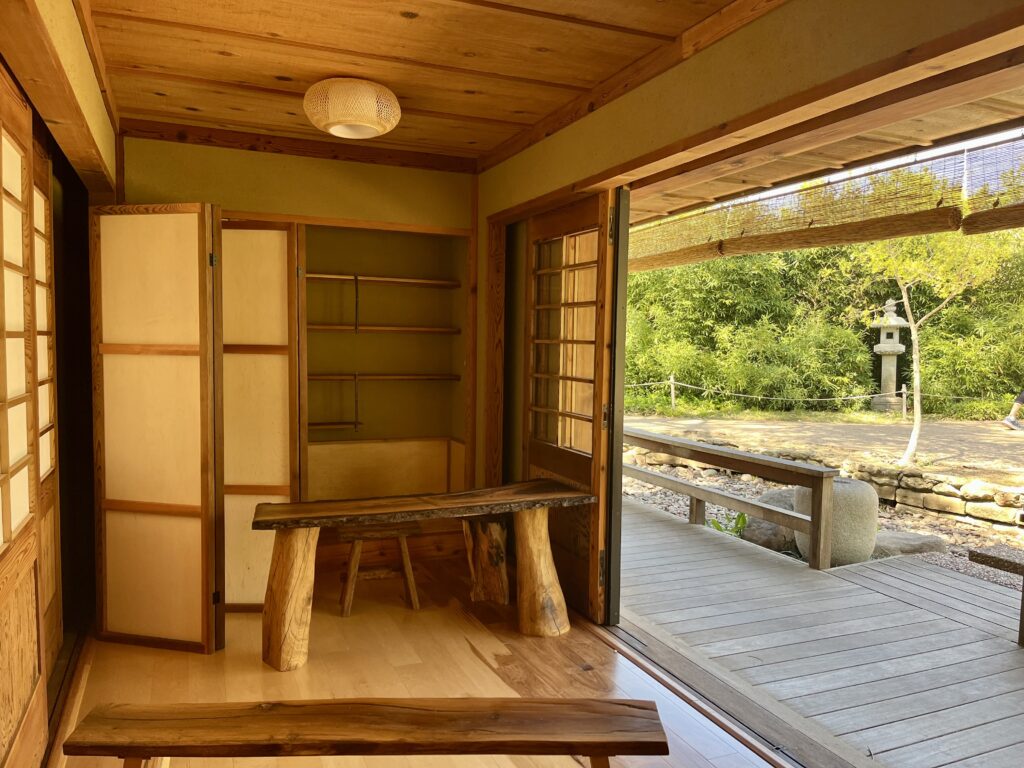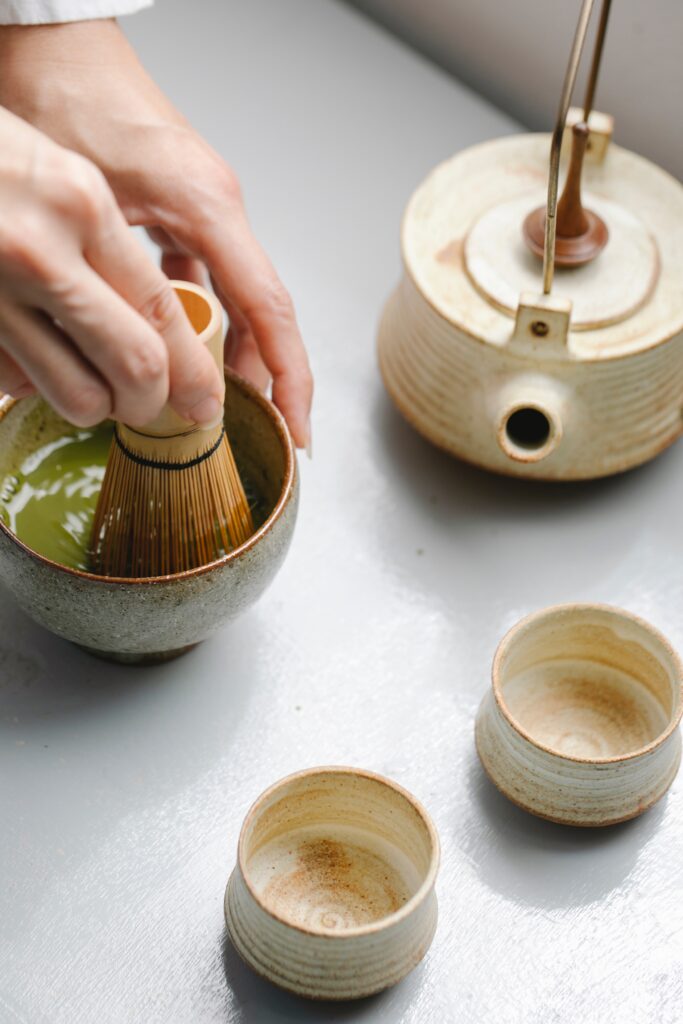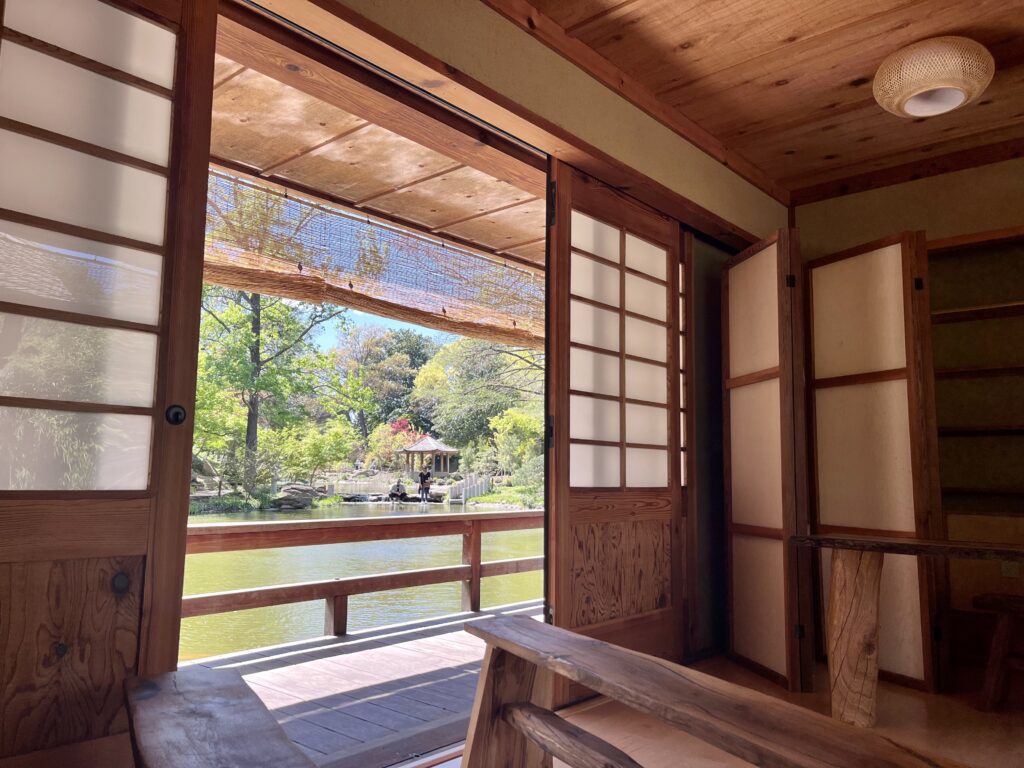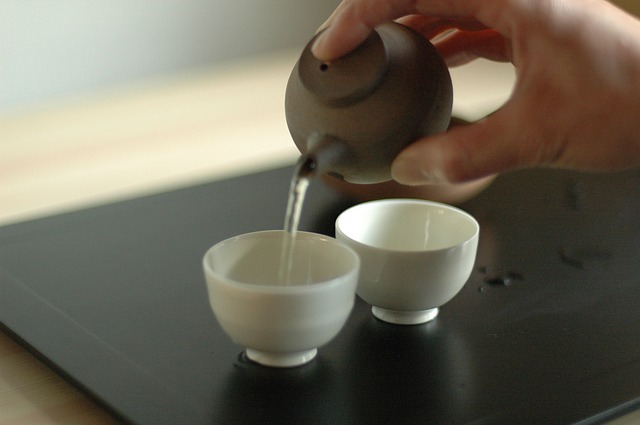
Guests to the Spring Japanese Festival will have an opportunity to view the Japanese Garden’s Tea House, now open after a comprehensive restoration. Work at the Tea House renewed the structure, repaired water damage and added features found in traditional Japanese tea houses, says project leader and Japanese Garden expert John Powell.
Powell drew on the Urasenke tradition, a centuries-old school of tea that emphasizes harmony, respect, purity and tranquility. “The Way of Tea is much more than a traditional way of serving guests a drink,” says Powell. “It is a rich tradition of hospitality that invites hosts and guests to respect one another and the world around them.”
Improvements to the Tea House include repairs to the structure, addition of exterior wood trim and the application of a traditional style of plaster to the walls. Inside, Powell built a new mizuya or “water place” at one end of the structure; this is a space set aside for the preparation of tea and the storage of utensils. He also added a tokonoma.
“‘Ritual alcove’ would probably be the best translation of tokonoma,” says Powell. “A hanging scroll with a poetic text or brush painting is placed in the alcove along with an arrangement of seasonal flowers and a container of incense. The first thing guests do upon entering a tea house is view the scroll and contemplate the text or painting.”

New furniture, including several benches and a table, was also built for the Tea House by craftsman Paul Thompson. Many tea ceremonies are conducted with guests sitting on mats on the floor. However, a new style of ceremony known as ryurei was invented in the late 1800s that introduced simple furniture to the practice. Japanese hosts had noticed that their Western guests were uncomfortable sitting on the floor, and the benches and tables were provided as a sign of hospitality.
“Part of Japanese tradition is to repurpose things and discover their natural beauty,” says Powell. “So most of the furniture was created from dead or fallen trees, including some from the Botanic Garden.”
Powell explains he was first introduced to the horticulture, architecture and culture of Japan more than 30 years ago on his first visit to the country. He returned many times to study and also worked closely with Japanese garden practitioners in the United States. Today he is considered a leading expert in the design and maintenance of Japanese gardens.
Powell will continue to work with Garden staff to finalize the Tea House restoration and expects the space will be ready to host tea ceremonies by this summer. Powell hopes that members of the community will make their way to the Garden and experience the Way of Tea for themselves.
“One of the principles of the Way of Tea is ichigo ichie. It means something like ‘one time, one meeting,'” says Powell. “Its a sentiment that each encounter only happens one time and can never repeated. That’s something that we carry into our work at the Garden, the sense that each moment is special and each experience should be treasured.”









